1951 Henry J Gasser Neglected for Decades Is a Cool Piece of Drag-Racing History
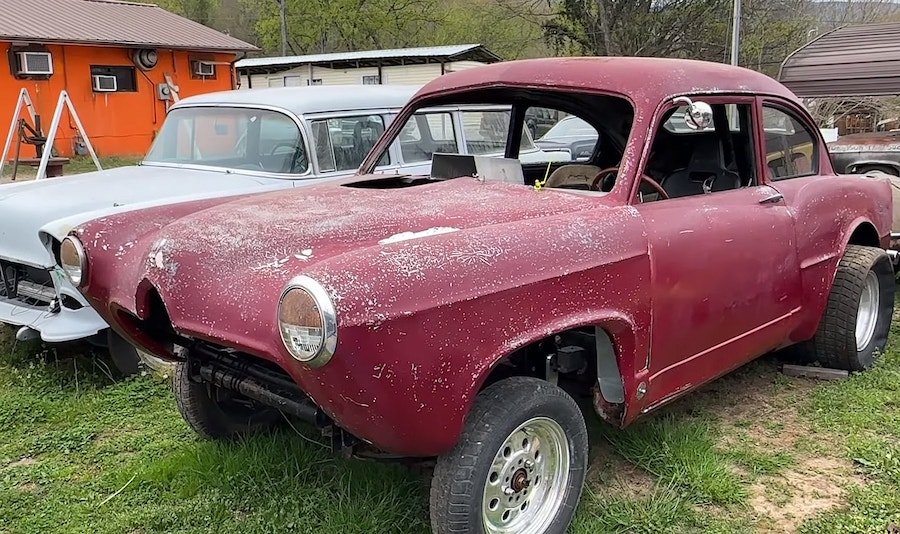
Now a quirky classic many folks haven't heard of, the Henry J was born in the 1950s, when American buyers were demanding increasingly larger and more luxurious automobiles. There was no such thing as a midsize car market, and the compact segment was still about a decade away.
As independent carmakers, both Kaiser and Nash were struggling to compete with the Big Three. And the people in charge of these companies decided that a new car had to be significantly different from the existing models provided by GM, Ford, and Chrysler. Nash created the Rambler, America's first compact, while Kaiser developed the Henry J.
Named after Kaiser-Frazer chairman Henry J. Kaiser, the Henry J was also notably smaller than the common full-size rig. Envisioned as a modern take on the Ford Model T, the Henry J was completed using a federal government loan. The latter specified that the car had to seat at least five adults and hit 50 mph (80 kph) for extended periods while costing no more than $1,300 in base trim.
To make it this affordable, Kaiser had to cut many corners and use the fewest possible components in the car. For instance, the Henry J did not have a trunk lid, and access to the storage compartment was possible only by folding down the rear seat. The car was also only available as a two-door sedan with fixed rear windows.
Kaiser also omitted common convenience features such as the glove compartment, armrests, a passenger-side sun visor, and a ventilation system. Initially, a four-cylinder engine was the sole option, but Kaiser eventually added an optional inline-six to the options list. A proper trunk lid also found its way into the body in 1952.
Sparsely equipped and promoting fuel economy at a time when gasoline was dirt cheap, the Henry J was far from successful. Although Kaiser moved 81,000 units in 1951, sales dropped to just 23,000 examples in 1952. Production was halted in 1953, and Kaiser struggled to sell its remaining inventory throughout 1954, a year after the company merged with Willys-Overland.
Like most cheap cars from the era, many Henry Js were abandoned in junkyards and crushed as more modern vehicles became available. But quite a few of them were turned into dragsters when the gasser craze hit the US in the 1960s. Yes, it's not the first rig you think of when talking about fast runs down the quarter-mile, but the Henry J was actually a solid base for such a thing. It was compact, lightweight, and cheap, just like early 1940s Willys coupes and the pre-1953 Ford Anglia.
The gassers are now even rarer than surviving Henry Js, but some of them are still out there waiting to be rescued and put back on the drag strip. And thanks to enthusiasts like YouTube's "Hot Rod Hoarder," a historic Henry J racer is about to make a comeback.
This 1951 version sat for a few decades until our host found it and decided to give it a second chance. The car is obviously in rough shape but is still in one piece and almost rust-free. Likely raced in the 1960s and 1970s, the Henry J still sports an old Airheart master cylinder, loads of aluminum parts under the hood, and a period-correct three-point roll bar.
Our host also found the old Bob's Drag Chutes harnesses in place and a one-piece fiberglass front end in excellent condition. The custom aluminum dash also rocks vintage gauges, including a Stewart Warter 160-mph speedo. This thing is still loaded with old-school gear, a rare feat for a vehicle that's been sitting for at least 40 years.
Luckily, the new owner is a big fan of the Henry J, having no fewer than six as of this writing. And even though it may not happen very soon, this old Kaiser will be rebuilt into a running and driving rig. Until that happens, check it out in its current condition in the video below.
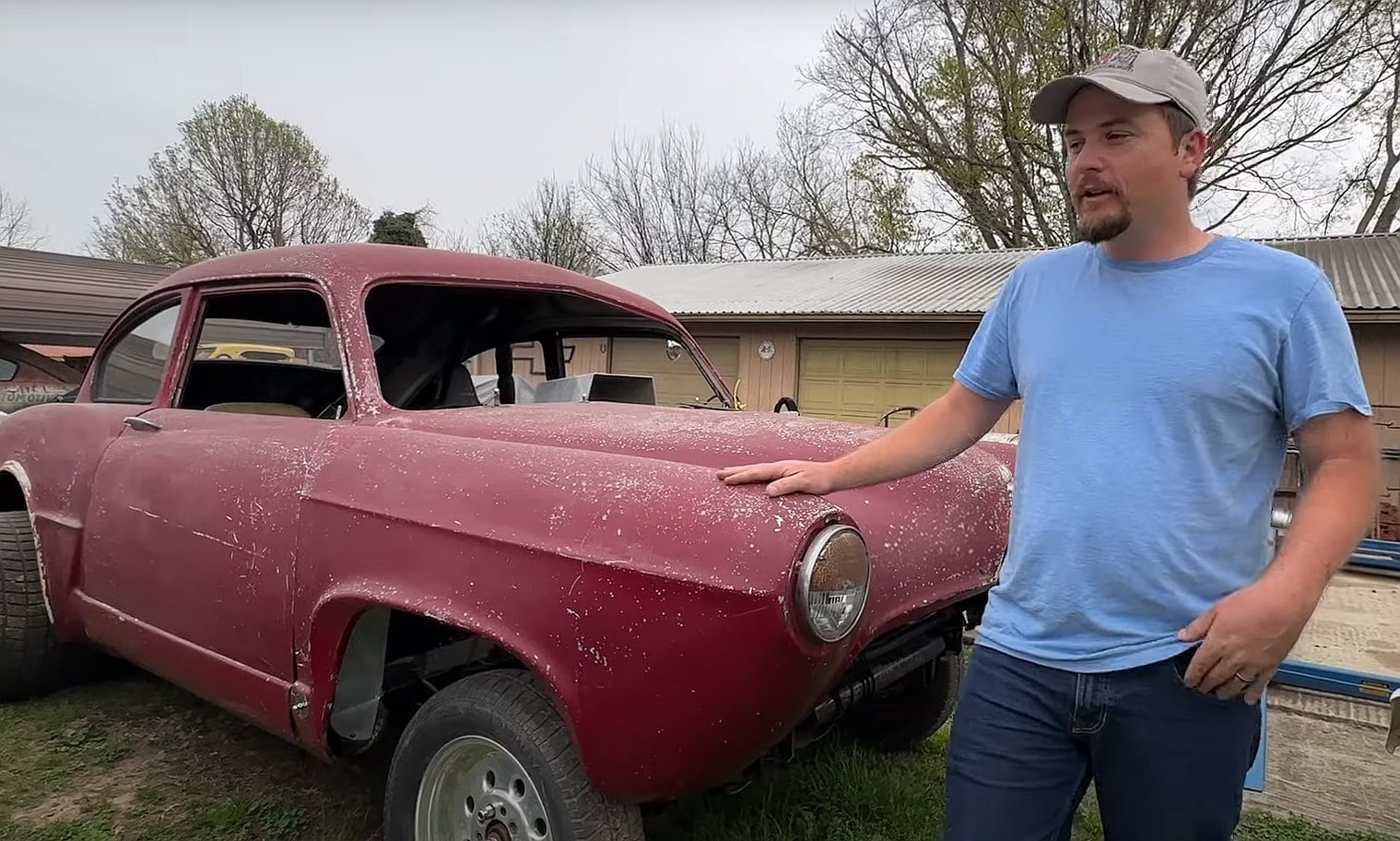
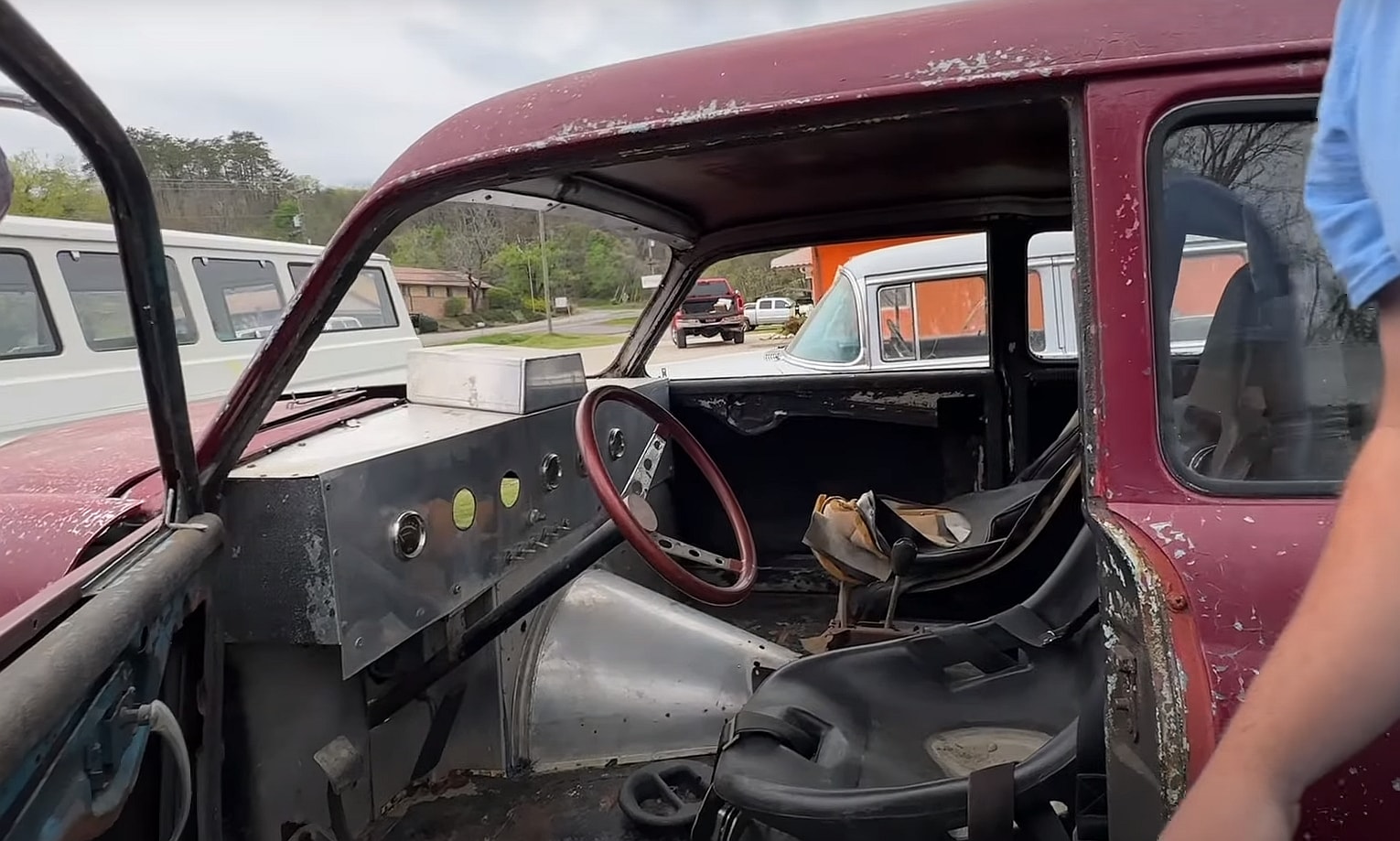
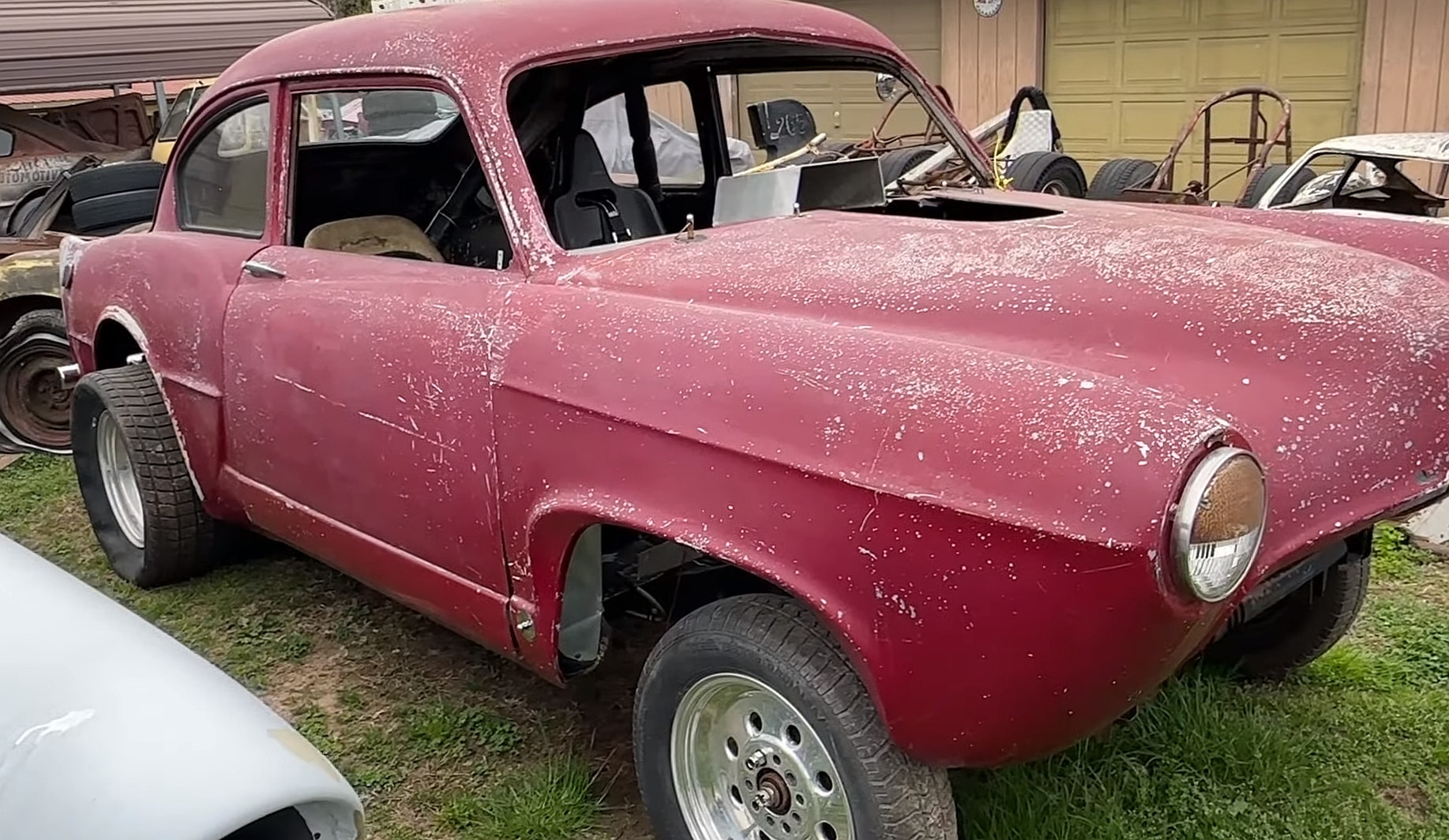
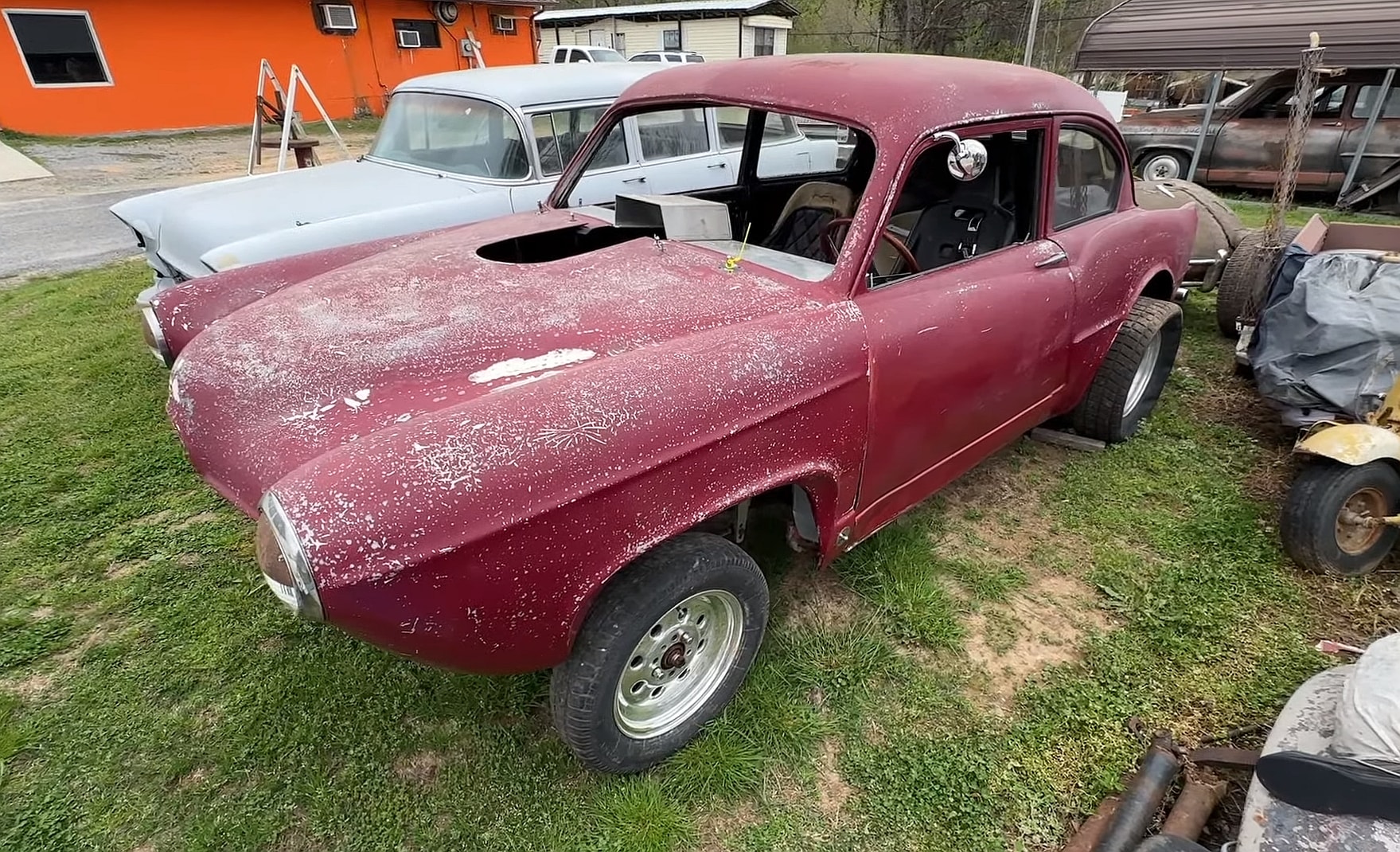
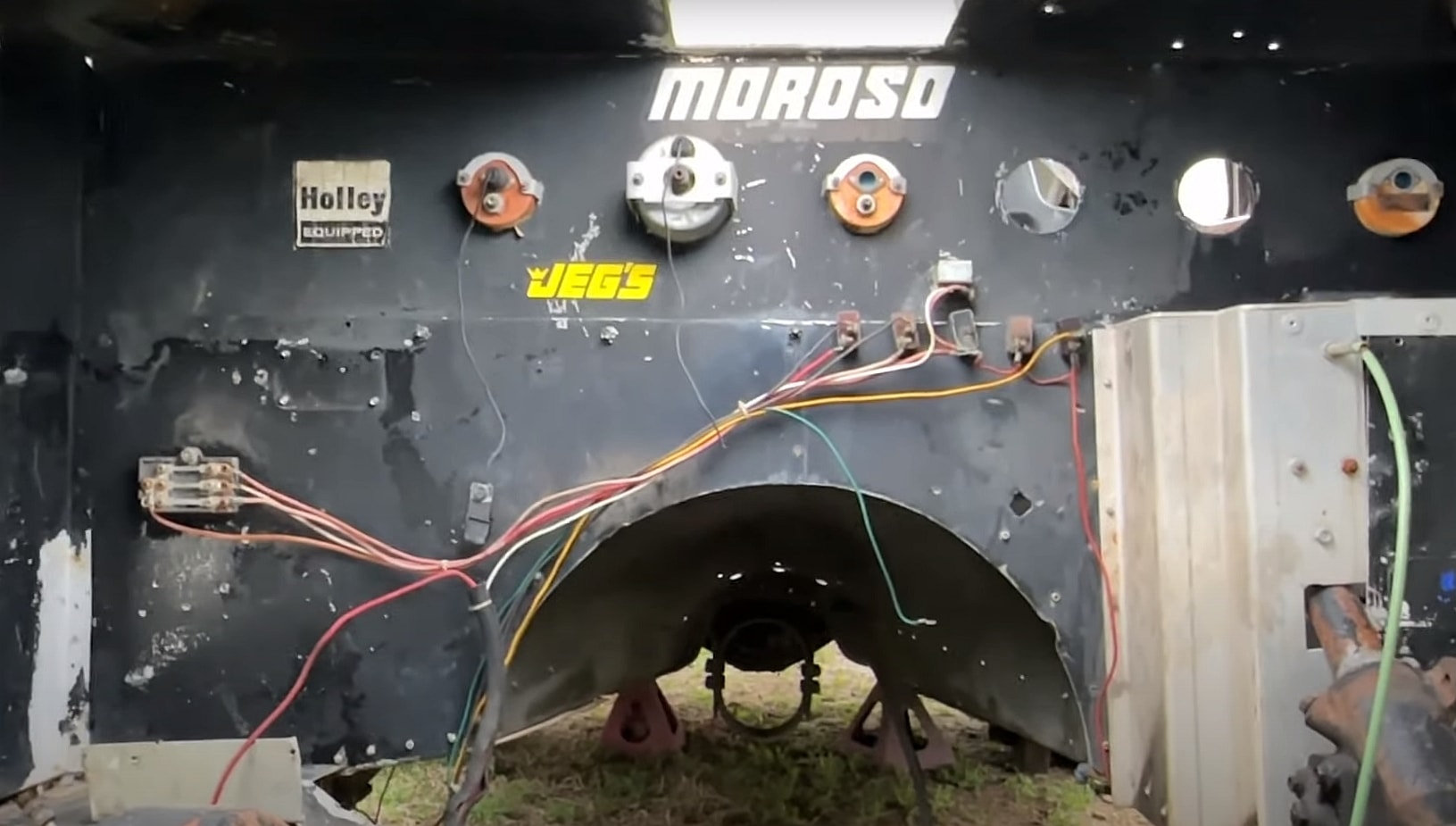

Nouvelles connexes
